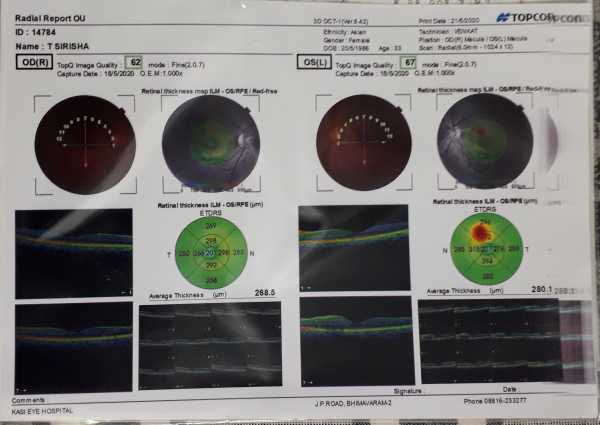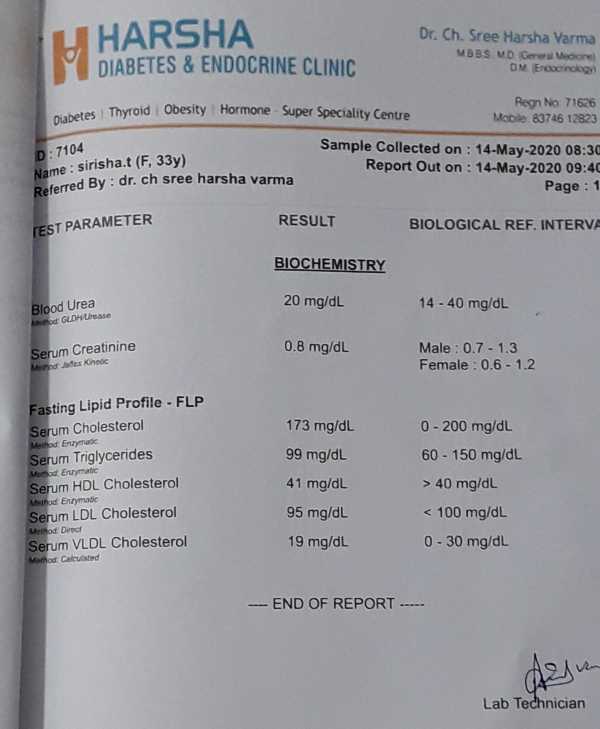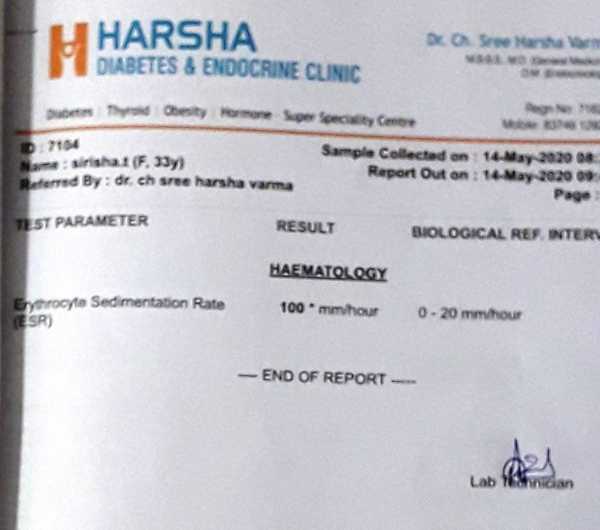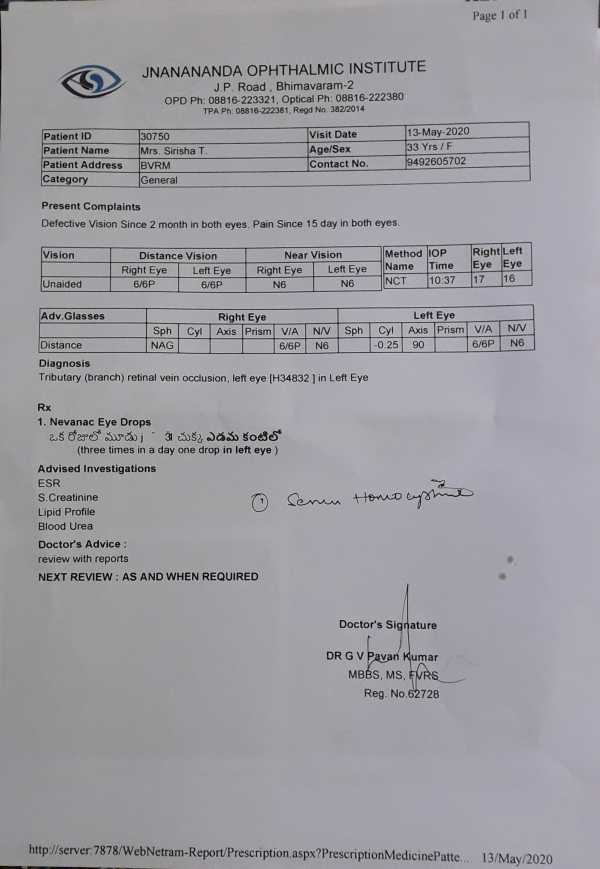She used the following eye drops.
Gatsun Forte (Gatafloxicin)
L-Pred Eye drops
Question
Sir,
This is regarding for my wife, who is 33 years old. Last two months back she got Conjunctivitis and got treated and cured well.
After recovery from eye infection, from last 10 days, she got blur vision in the left eye. We thought that there may be any eye sight and decided to provide spectacles after getting suggestion from Ophthalmologist. He tested the eyes with eye testing glasses, she had -0.25 power, but there is no clearness in the sight.
He scanned the left eye and told that Tributary (Branch) retinal vein occlusion in left eye. He suggested Serum Homocystine, ESR, Lipid Profile, ESR, Serum Creatinine, Blood Urea. All test results are found normal but Homocystine result is 31.2 umol/L against < 15.
He told that B12 deficiency and suggested Omega 3 Fatty Acids provided EPA & DHA Softfel capsules and Homo-16 D Tablets (Methycobalamin, Alpha Lipoic Acid, Folic Acid, Pyrodoxine Hydrochlorice, and Vitamin D3 combination) for 2 months.
Is it right investigation and please advise. Is she required any Angiogram or Injection to reduce the swelling of the vein.
Reports are enclosed.
Answer
Thanks for your Question
The incidence of Retinal vein occlusion is higher in patients with high Homocystine. The treatment of high Homocystine should be done by internist (Hematologist and immune disease).
Regarding the eye, there is macular edema of the left eye and it would be better to start on intraocular injections. there are different types of injections and your doctor can choose which is the best for your wife according to eye examination but in general Ozurdex injection works better for macular edema caused by retinal vein occlusion.







Please Log-in to add Comments